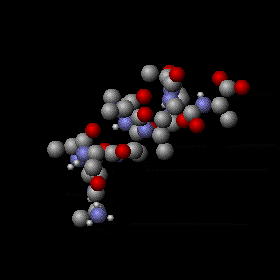Thermodynamic Limits to Optical Metrology
Return to all Research Topics
Thermodynamic Limits to Optical Metrology

Since all matter is at a finite temperature, the ultimate limits to the vibration level are set by thermodynamics: the Equipartition Theorem (http://hyperphysics.phy-astr.gsu.edu/hbase/kinetic/eqpar.html) tells us that the amount of vibrational energy in every mechanical mode of a system is proportional to temperature. But there's more to the story than temperature.
For perfect crystals, the thermal energy would indeed be concentrated at just the frequencies of those mechanical eigenmodes. At all other frequencies there would be no thermal motion. In real systems, however, the thermal energy is spread out by the internal friction of the material. So in lossy materials like plastics and metals, the finite friction determines how much of this energy leaks out of the narrow mechanical resonances.

In our labs at Caltech we are looking to solve this problem in a number of ways. We have built high precision optical cavities to directly measure these fluctuations in a number of different mirror types. We are also directly exploring different thin films and deposition methods in order to produce a so-called 'ultra-stable glass' with a friction so low that the thermal vibrations become irrelevant.
Publications
| "Einstein on Brownian Motion", by D. Cassidy https://www.aip.org/history/exhibits/einstein/essay-brownian.htm |
| L. Berthier and M. D. Ediger, "Facets of Glass Physics", Phys. Today (2016) https://arxiv.org/abs/1512.03540 |
| T Chalermsongsak, et al., "Broadband measurement of coating thermal noise in rigid Fabry–Pérot cavities", Metrologia (2014) https://arxiv.org/abs/1406.4467 |
| T Chalermsongsak, et al., "Coherent cancellation of photothermal noise", Metrologia (2016) https://arxiv.org/abs/1506.07088 |
| RX Adhikari, "Gravitational Radiation Detection with Laser Interferometry" Rev. Mod. Phys. (2014) https://arxiv.org/abs/1305.5188 |
| E Cesarini, et al. "A 'gentle' nodal suspension for measurements of the acoustic attenuation in materials", Rev. Sci. Inst. (2009) http://dx.doi.org/10.1063/1.3124800 |